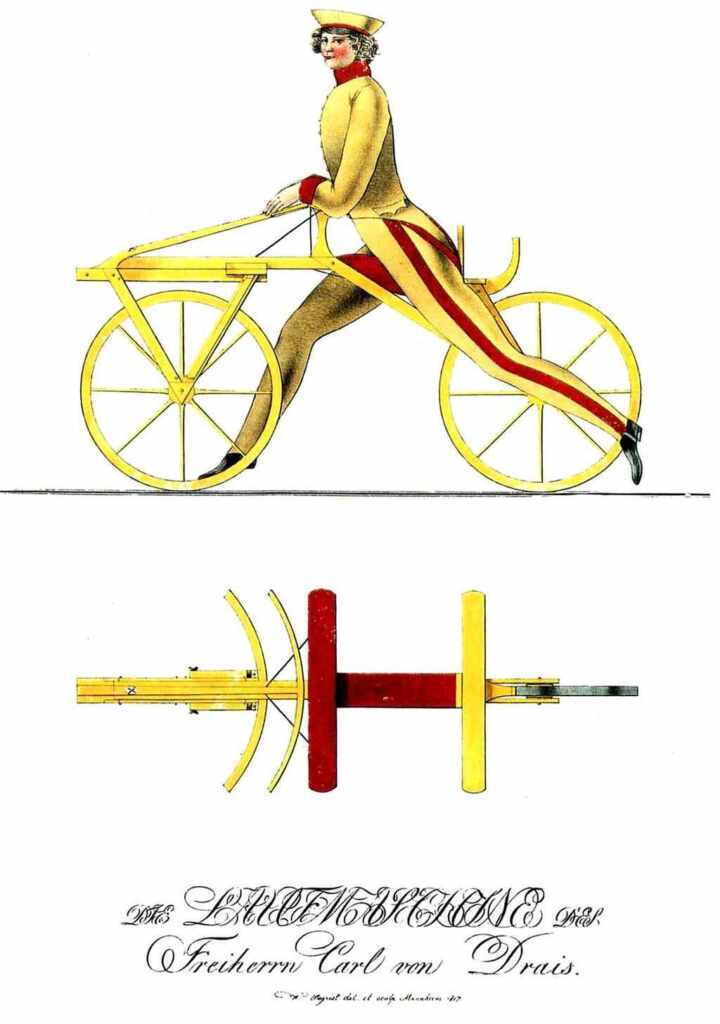The bicycle and the automobile were invented in Mannheim and revolutionised our mobility: let's discover the controversial origins of these two means of transport
In the heart of southwestern Germany lies Mannheim, a seemingly quiet town to which we owe a tremendous debt. This unassuming place gave birth to two of the most revolutionary inventions in modern mobility: the bicycle and the automobile. Thanks to two visionary minds, Mannheim played a decisive role in changing how humanity moves.
The bicycle: the genius of Karl von Drais
In 1817, an eccentric baron named Karl von Drais, driven by necessity and a sharp sense of practicality, created a new and innovative mode of transportation: the Laufmaschine, or “running machine.” It was a wooden frame with two wheels that the rider had to push along with their feet.
This vehicle, the forerunner of the modern bicycle, offered a groundbreaking alternative to the use of horses, especially at a time when the eruption of Mount Tambora had thrown global climates into chaos, causing widespread famine and forcing many to sacrifice their work animals.
The “Draisine,” as the press soon called it, allowed for much faster travel than walking and quickly drew public attention. However, society at the time was not ready for such innovation: the roads were terrible, the device was hard to use, and several cities even banned it. Despite his brilliance, Drais was persecuted for his liberal political ideas and eventually died in poverty. Yet his invention was never forgotten.
About fifty years later in France, pedals were added to the Draisine, giving birth to the “velocipede.” Soon after, bicycles evolved with different wheel sizes and, thanks to the invention of the roller chain, finally took on their modern form. This simple, quiet, and affordable means of transport became a powerful tool for social change, especially for women, who could now move freely and independently.

@Wilhelm Siegrist/Wikipedia
The automobile thanks to Karl Benz
But Mannheim wasn’t done making history. In 1885, another inventor, Karl Benz, developed the first gasoline-powered vehicle: the famous Patent-Motorwagen, a three-wheeled car with a single-cylinder engine. It was slow and tricky to handle, but it worked. The following year, Benz registered patent number 37435, officially marking the birth of the modern automobile.
Proving the practical value of this invention was Bertha Benz, the inventor’s wife, who in 1888 made a daring journey from Mannheim to Pforzheim, covering over 62 miles without informing her husband or the authorities. Her audacious trip turned the automobile from a mere prototype into an instrument of change.
Today, Mannheim proudly celebrates this double legacy. Between museums, bike paths, and commemorative routes like the Bertha Benz Memorial Route, the city has become a meeting point between past and future. Here, where two wheels and three wheels sparked a revolution, innovation continues to pedal and roar toward new destinations.

@Wikipedia
